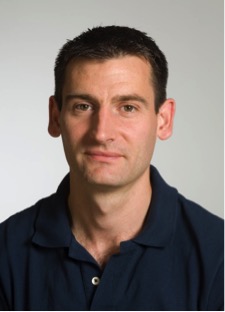
SPEAKER PROFILE |
 Dr. Rolf Erni Electron Microscopy Center, Swiss Federal Laboratories for Materials Science and Technology, Empa, Dübendorf Switzerland |
Advanced Analytics by Scanning Transmission Electron Microscopy
Abstract
Unconventional approaches of using STEM to study the evolution and physical properties of nanomaterials are presented. When exploring the dynamics and stability of tiniest clusters of Pt atoms at elevated temperatures, we benefit from the high spatial resolution of STEM and overcome the limited temporal resolution by applying an unusual fast scanning mode. This results in large sets of noisy data that require advanced data processing including machine learning and molecular dynamics simulations. In contrast, it is the limited depth of field of an aberration-corrected STEM probe which boosts the resolution in liquid cell STEM while controlling nucleation and growth mode of metallic nanoparticles by the electron beam. Using differential phase contrast STEM, electrostatic fields, potentials and charges of individual atoms can be mapped. This is applied to study ordering of the ferroelectric polarization of a multiferroic material at atomic resolution.
Rolf's research interests cover various topics in electron microscopy, such as atomic resolution and low-voltage electron microscopy, in-situ electron microscopy and (valence) electron energy-loss spectroscopy. In collaboration with various research groups, he has published articles in numerous fields ranging from atomic-scale studies of precipitates in binary alloys, valence electron energy-loss spectroscopy, interplanetary dust particles, carbon nanomaterials, semiconductor nanostructures, complex functional oxides, and in the field of aberration-corrected high-resolution electron microscopy
Bio
Rolf studied materials science and received his doctoral degree from ETH Zurich at the (formerly) Institute of Applied Physics. Thereafter he carried out postdoctoral studies at the University of California at Davis and at the National Center for Electron Microscopy (NCEM), Lawrence Berkeley National Laboratory. He then joined FEI Company as an application specialist and was later in the role of a system engineer. Before returning to NCEM as a staff scientist, he spent a period of time as a faculty member at the EMAT institute of the University of Antwerp. Since 2009, Rolf is head of Empa's Electron Microscopy Center.Rolf's research interests cover various topics in electron microscopy, such as atomic resolution and low-voltage electron microscopy, in-situ electron microscopy and (valence) electron energy-loss spectroscopy. In collaboration with various research groups, he has published articles in numerous fields ranging from atomic-scale studies of precipitates in binary alloys, valence electron energy-loss spectroscopy, interplanetary dust particles, carbon nanomaterials, semiconductor nanostructures, complex functional oxides, and in the field of aberration-corrected high-resolution electron microscopy